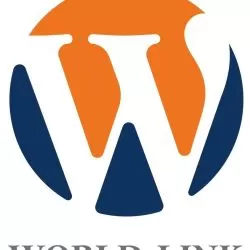Ocean freight: Good news and bad news
Spot freight rates for container shipping from Asia to the US surged last week, however, spot rates on the transatlantic route have dropped again, with an average freight rate of $1,500/40ft.

Spot container freight rates from Asia to the US spiked last week, as shipping lines were also trying to stem a short-term drop in freight rates from Asia to Northern Europe.
However, spot rates on the Transatlantic route have dropped, with average freight rates falling to $1,500/40ft.
John McCown's latest analysis of US container imports in June 2023 shows that import volume at the top 10 US container ports decreased by 18.6% over the same period last year, to 1,747 .698 TEU – down, but this is an improvement from the 20.1% drop in May and a deeper 21.6% in April.
This expert expects August 2023 to be the last month to see a consecutive double-digit decline, as the comparisons start to reflect the start of the normalisation of the trade after the post-pandemic surge.
Moreover, now a number of shipping lines with trans-Pacific routes have expressed more optimism about the possibility that transportation demand will increase during the remainder of the peak season.
In the announcement of preliminary business results for the second quarter of 2023 on July 20, Matson, a shipping company specializing in the domestic US and trans-Pacific markets, said it expected the trans-Pacific trade route "to experience a muted peak season", but is also quite confident when it is reported that Matson's service route from China to the US West Coast during the peak season is now "near full".
Matt Cox, President and CEO of Matson, said: “We continue to expect trade dynamics to gradually improve for the remainder of the year as the transpacific market place transitions to a more normalised level of consumer demand and retail inventory stocking levels.”
Xeneta's XSI Asia-West Coast Container Rate Index rose 23% to $1,790/40ft last week, and the average freight rate on the route is now up 40% month-to-date.
However, last week's significant increase can be attributed to ongoing strikes at container ports on Canada's west coast, causing shipping lines to divert some vessels, blank sailings and slide the departure of vessels from Asia into the following week.
The East Coast market also saw positive signs for shipping lines, for example, Drewry's WCI index for Asia to the US East Coast increased 7% to $2,906/40ft.
In other markets, rational capacity management by carriers from Asia to Northern Europe seems to have helped stabilize rates, with the Freightos Baltic Index (FBX) Nordic being flat, for example, maintained at an average of $1,285/40ft. According to information from representatives of shippers and forwarders talking to The Loadstar, this market is being dominated by MSC, Evergreen, ONE and, Twill, Maersk's digital platform.
Meanwhile, spot rates for the Asia-Mediterranean route are showing signs of weakening, due to the increased fleet capacity on the route and the addition of new service routes, although the rates are still significantly higher than those for the Asia-Mediterranean route with freight to North European countries.
The WCI Asia-Mediterranean Index this week fell 2% to $1,902 per 40ft container.
Earlier this week, Maersk announced an increase in the Asia-Mediterranean FAK rate, effective from August 2023, whereby shippers sending goods to several Mediterranean ports are offered a price of $3,600 per container 40ft.
On the transatlantic route, weekly freight rates continue to fall, leaving spot rates now much lower than pre-pandemic levels. Last week's average WCI for the Nordic-US East Coast service dropped another 7% to $1,640/40ft, although strike rates are being offered in the market at $1,300 or less.
Read more:
- Transpacific container freight rates increase due to strike at Canadian ports
- SM Line is planning to acquire HMM for 3 billion USD
- Forecast of the container shipping market in the second half of 2023
- Port of Rotterdam reduces container volume and profit in the first half of 2023
Source: Phaata.com (According to The Loadstar)
Phaata - Vietnam's First International Logistics Marketplace
► Connect Shippers & Logistics Companies faster!
























.webp)




.webp)
.webp)
.webp)









